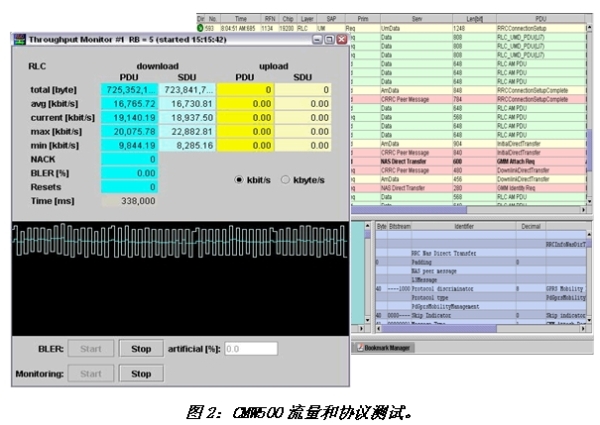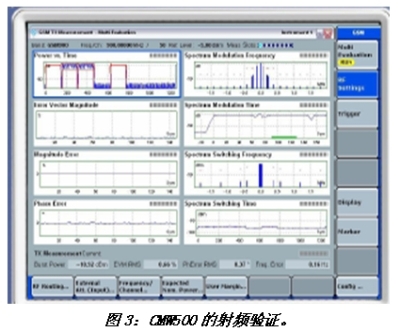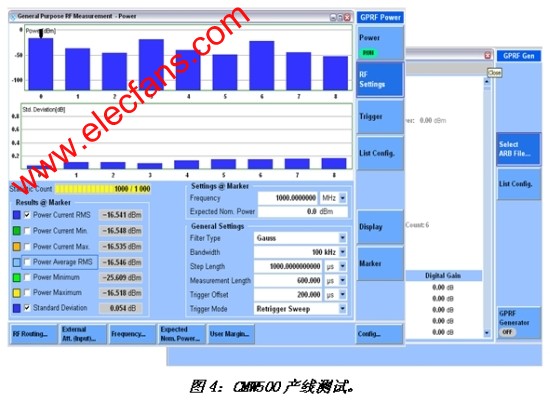To increase the rate and capacity of downstream and upstream packet data, UMTS high-speed downstream packet access (HSDPA) and high-speed upstream packet access (HSUPA) networks have been deployed on a large scale worldwide. In 3GPP, HSDPA was introduced as Rel-5, and HSUPA is a very important feature of 3GPP Rel-6. The combination of HSDPA and HSUPA is HSPA + (High Speed ​​Packet Access). However, even with the introduction of HSPA, the evolution of UMTS has not reached its end. In Rel-7 and RelL-8, HSPA + will bring great performance enhancement, the purpose is to significantly improve the performance of HSPA-based wireless networks in terms of spectrum efficiency, peak rate and delay, so that they can make full use of WCDMA networks Resource potential.
HSPA + main technical characteristics and needs
HSPA + was defined in 3GPP Rel-7 version, and the main features are distributed in Rel-7 and Rel-8 versions (Figure 1).

The base station of UMTS can realize the smooth upgrade from HSDPA / HSUPA to HSPA +. At present, some foreign WCDMA operators have begun to deploy HSPA + networks to enhance the user's network experience. Considering comprehensively the relevance of the evolution of HSPA + technical characteristics, the cost-benefit ratio achieved and the development of LTE technology, HSPA + networks prioritize the support of defined technical characteristics. With the gradual approach of LTE trial commercialization, various chip manufacturers have more adopted the strategy of complying with network user experience and smooth transition in support of HSPA + terminal features. The early HSPA + chip first supports the main features of downlink 64QAM, layer 2 enhancement, enhanced Cell FACH, CPC, uplink 16QAM, MIMO and so on. These features cover the protocol stack and physical layer technologies of HSPA +, and therefore involve protocol stack testing and RF testing. How to verify the consistency of the above characteristics in the process of chip development and production to ensure the quality of development and production has become a very important task.
Downlink 64QAM: HSPA + Downlink 64QAM modulation mode capability introduces new UE categories 13 and 14, which increases the maximum downlink rate to 21.1 Mbps on the basis of 15 code channels of HSDPA. The base station introduces a new CQI mapping table for accurate 64QAM scheduling, informs the mobile phone through the downlink HS-SCCH channel, and the test specification introduces a new fixed reference measurement channel H-SET8. For HSPA + terminals supporting 64QAM, it is necessary to evaluate the maximum reception level of HS-PDSCH and the performance of single link under H-SET 8. In addition, verifying the real traffic of the HSPA + data terminal is of great reference significance to the actual user experience of HSPA + products.
Uplink 16QAM: Uplink 16QAM modulation mode capability introduces a new UE category 7, which doubles the upstream rate to 11.5Mbps on the basis of HSUPA's original four code channels. The specification introduces a new AG value mapping table for 16QAM to include a higher transport block size and authorization value. The introduction of 16QAM modulation also puts forward new requirements for both protocol and radio frequency. For example, it is required to measure RCDE on radio frequency, and it also puts forward new requirements for EVM.
Layer 2 enhancements: In order to support high-order modulation and high rate of MIMO, HSPA + is at layer 2, which mainly makes many enhancements to MAC and RLC. The MAC layer introduces an enhanced MAC-ehs entity. MAC-ehs supports flexible RLC PDU size and MAC aggregation and segmentation functions, allowing multiplexing of data from multiple priority queues within a 2ms TTI and deciding to transmit single or multiple data streams (MIMO). At the same time, RLC has also been enhanced to support flexible downlink PDU sizes in AM mode. For HSPA +, how to verify the enhanced features of layer 2 is very important.
Enhanced Cell FACH: Enhanced Cell FACH technology can ensure better transmission experience for users. Due to very little control channel overhead, the CELL_FACH state is very suitable for "always on" type services. Previous HSDPA mostly operated under CELL_DCH, and the enhanced Cell FACH technology allows the use of HS-DSCH under CELL_FACH, even CELL_PCH and URA_PCH, thereby enhancing the possible rate. Especially for a small amount of data, it can be completed in a short time without switching to the CELL_DCH state. At the same time, due to the TTI of HS-DSCH 2ms, the signaling delay of the downlink control message is reduced. In addition, the conversion time of CELL_FACH, URA_PCH and CELL_PCH to CELL_DCH is also greatly reduced, which improves user satisfaction with intermittent data transmission. Therefore, the protocol is also necessary to verify the enhanced Cell FACH function.
Continuous packet connection (CPC): HSPA + continuous packet connection (CPC) technology mainly includes DTX / DRX technology and HS-SCCH Less OperaTIon technology, etc. DTX / DRX realizes discontinuous uplink transmission and downlink discontinuous reception, so as to reduce uplink interference , Improve uplink capacity and save UE power consumption, etc .; and HS-SCCH Less OperaTIon achieves this by saving HS-SCCH transmission in certain situations (such as low-speed transmission), and blind demodulation of limited format combinations by the mobile phone itself The purpose of saving downlink channel code resources and increasing the number of downlink users. CPC technology can help many users “always onlineâ€, but can also experience the similar experience of fixed broadband network access. HSPA + 's CPC technology puts new demands on both protocol and RF testing.
MIMO: Multiple Input Multiple Output (MIMO) is a very important technology in the later evolution of HSPA +. The 64QAM modulation method defined by Rel-8 and the application method combining MIMO can further improve the downlink data traffic. HSPA + MIMO mainly adopts the form of 2 × 2, under ideal conditions, it can achieve twice the data transmission volume of HSDPA, that is, the maximum transmission rate is 28Mbps. In the application of HSPA + MIMO, a new HS-SCCH type M is introduced to transmit pre-coded information in the downlink. For mobile phones, it is necessary to transmit precoding control information (PCI) and channel quality indication (CQI) to the base station. When the channel environment is not suitable for MIMO operation, it can fall back to the traditional closed-loop transmit diversity.
Other features: Under the current specification, all Rel-8 features similar to MIMO are optional for HSPA + data terminals. For terminal manufacturers, how to seize the opportunities for the development of HSPA +, it is very important to launch HSPA + terminals with quality and quantity in a timely manner.
Rohde & Schwarz HSPA + test solution
1. RF and baseband generation and analysis scheme
When testing the performance of components or mobile terminal receivers, a signal source is often required. Rohde & Schwarz (R & S) SMU, SMJ and SMATE vector signal sources, or AMU or AFQ baseband sources, can generate HSPA + uplink and downlink RF or baseband signals according to specifications, and support fading simulation and MIMO, suitable for meta Device and mobile terminal receiver performance testing.
When testing the performance of components or mobile terminal transmitters, spectrum and signal analyzers are often used. R & S's FSQ, FSG and FSV can analyze HSPA + 's radio frequency or baseband signals, so as to quantitatively analyze components and mobile terminal transmitters.
2. HSPA + protocol test
R & S's CMW500 can complete the HSPA + protocol test (Figure 2), which not only supports the aforementioned layer 2 enhancement, downlink 64QAM modulation, and enhanced F-DPCH and CPC tests. The CMW500's unique dual-port design makes it also Can support MIMO test. Therefore, CMW500 became the first HSPA + protocol conformance certification test platform recognized by GCF.

In addition, for the development and testing of the HSPA + protocol stack, the CMW500 can provide a C ++-based MLAPI test environment, allowing customers to freely and conveniently create any test scenario, and even simulate the performance status of the HSPA + real network. HSPA + high-speed traffic testing and even various switching states can be quickly implemented based on the above test environment.
3. HSPA + RF test
By adding appropriate software, R & S's CMW500 can also complete HSPA + RF verification (Figure 3). As mentioned earlier, starting from 3GPP 34.121-1 Rel-7, not only new reference measurement channels have been defined, but more importantly, new transmitter and receiver test and performance use cases have been introduced for the characteristics of HSPA + technology. The CMW500 single machine can complete the verification of the transmitter and receiver based on the above characteristics of HSPA +, and has unique support for MIMO due to its dual-channel design.

For HSPA + specific RF testing, it is still distributed in chapters 5, 6, 7, 9, and 10 of 3GPP 34.121-1. HSPA + test mode and throughput under service flow can also be quickly measured through the interface.
Based on CMW500, R & S can also provide customers with RF conformance test solutions for HSPA + terminals. Both original TS895x customers and new customers can easily upgrade or build an RF compliance test system for R7-LTE to provide more test case coverage and meet higher test requirements. Rohde & Schwarz combined with the TS895x series of more than ten years of experience and user feedback to provide customers with R7-LTE (TS8980) has a better user experience and cost-effective.
4. HSPA + production line test
For the production line test of HSPA +, CMW500 can also provide excellent performance (Figure 4). The advanced DSP processing capabilities and algorithms, combined with the powerful list mode, Multi-evaluation function and the industry's innovative Multi-evaluation list mode, provide great flexibility and industry-leading speed for the calibration and comprehensive measurement of the production line.

At present, the development of wireless terminals is becoming more and more complicated, requiring support for multiple standards and multiple frequency bands, including cellular technology standards (such as GSM / (E) GPRS, UMTS / HSPA, CDMA2000 / EvDo, TD-SCDMA, etc.) and non-cellular Technical standards (eg BT, WiFi, GPS, etc.). How to reduce the total calibration and comprehensive measurement time of a terminal is a problem that the test platform should consider. The CMW500 itself has a leading channel design that allows automatic switching of channels during the parallel calibration of TX and RX. It can also perform parallel measurements on other cellular and non-cellular standards included in HSPA + terminals, and can even support multiple terminals. As a result, users are shifting from a single mode of time-consuming attention to an extraordinary experience of overall time-efficiency ratio.
Summary of this article
In summary, HSPA + is a smooth transition technology based on HSDPA / HSUPA, which has both old technical figures and innovative things. The HSPA + terminal test must cover details related to the technical characteristics of HSPA +, focusing on problem solving and product stability. In this case, a highly consistent test solution that covers the entire phase from R & D to production and provides early positioning becomes more realistic.
The Apple Lightning Cable is one kind of our mobile phone cables , this Apple Charger Cable Charging transfer two no error , charging / data transfer synchronization . It boasts increased durability , faster charging , faster data transfer and compatibility with almost all cases . Give your iPhone the treatment it deserves .
This apple iPhone charger cable Compatible With : iPhone 6s / 6s Plus / 6 / 6 Plus / 5s / 5c / 5 , iPad Air / Air 2 , iPad mini / mini 2 / mini 3 / mini 4 , iPad (4th generation), iPod nano (7th generation) and iPod touch (5th generation) .
We hope that we can become your trustful supplier with the best quality digital products at competitive prices . Every Apple Lighting Cord products has been test over 4000 times and saw no damage or change in performance. Premium nylon fabric feels great and doesn't tangle .
This data cable can be connected to all the smart devices with MICRO interface to your computer USB port for sync and charging .
Apple Lightning Cable
Apple Lightning Cable,Apple Charger Cable,Iphone Charger Cable,Red Apple Lightning Charger,Apple Lighting Cord
Hebei Baisiwei Import&Export Trade Co., LTD. , https://www.baisiweicable.com